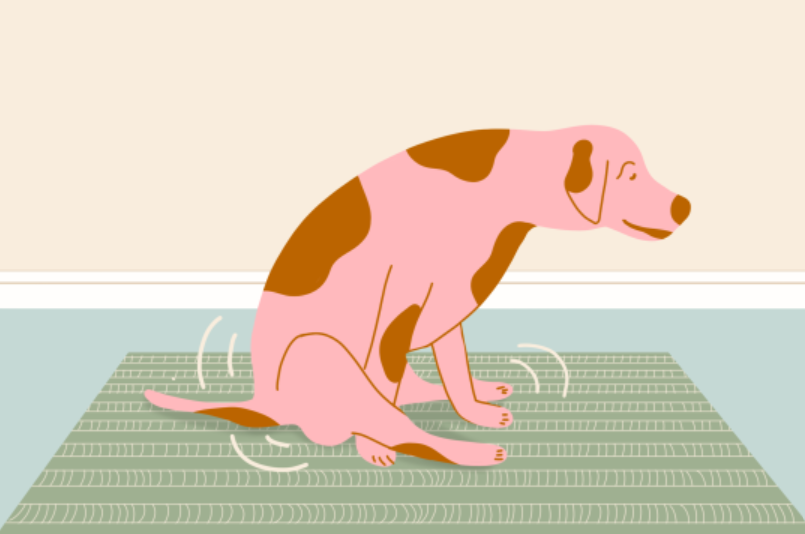
Anal Sac Health in Dogs: Signs, Solutions, and Everyday Care
Share
Understanding Your Dog's Anatomy
The anal sacs—small, scent-producing glands located at the 4 and 8 o’clock positions around your dog’s anus—play a role in your dog’s unique way of communicating with other dogs. While these little organs often go unnoticed, they can cause discomfort if they don’t function well. Knowing a bit about how they work can help you spot signs of trouble early.
Scooting and More: How to Tell if Your Dog Needs Help
If your dog has ever scooted across the floor or shown discomfort when sitting, it could be their anal sacs acting up. Understanding the signs and knowing when to get help can make a world of difference.
- Common Issues: Research shows that around 12-16% of dogs experience problems with their anal sacs.
- Risk Factors: Weight gain, low-fiber diets, and breed predispositions all play a role.
- Signs to Watch For: Spotting early signs can help you prevent discomfort and avoid more serious problems.
Quick Guide: Common Warning Signs.
🔍 Look out for these behaviors in your dog:
- Scooting along the ground
- Licking or biting at the anal area
- A sudden, strong fishy odor
- Visible swelling or redness around the anus
- Signs of discomfort when sitting or lying down
If you notice any of these, it’s a good idea to check in with your veterinarian.
Why Do Anal Sac Problems Happen?
Factors That Can Contribute to Anal Sac Issues
-
Anatomy
- Inflammation in the ducts
- Differences in muscle tone
- Physical variations that affect how sacs empty
- Inflammation in the ducts
-
Lifestyle Factors
- Diet composition and fiber levels
- Exercise frequency
- Grooming habits
- Diet composition and fiber levels
Any of these factors can make it harder for the anal sacs to empty naturally, which can lead to discomfort or infection.
Treatment Options to Help Your Dog Feel Better
Immediate Care
-
Manual Expression: Vets can safely empty impacted sacs when needed.
-
Medication: Antibiotics may be recommended if infection is present.
-
Anti-Inflammatories: These can reduce pain and swelling.
Long-Term Management
-
Diet Changes: Adding fiber can encourage natural anal sac expression.
-
Weight Control: A healthy weight reduces the likelihood of issues.
-
Regular Vet Visits: Routine check-ups can catch early signs of trouble.
Myth vs. Reality: Debunking Common Beliefs
MYTH: “All scooting is due to anal sac issues”
REALITY: Scooting can have many causes, so a diagnosis is helpful.
MYTH: “Fishy smell is normal”
REALITY: Persistent odor may signal infection and needs attention.
MYTH: “Only small dogs have these issues”
REALITY: Dogs of any size or breed can develop anal sac problems.
Prevention: Simple Tips to Keep Your Dog Comfortable
-
Diet and Hydration
- Add fiber to your dog’s diet to help their sacs empty naturally.
- Ensure they’re drinking enough water.
- Keep them at a healthy weight.
- Add fiber to your dog’s diet to help their sacs empty naturally.
-
Daily Exercise
- Regular physical activity is great for overall health, including anal sac function.
- Include activities that strengthen muscles around the hips.
- Avoid inactivity or excessive weight gain, both of which can increase risks.
- Regular physical activity is great for overall health, including anal sac function.
-
Routine Care
- Schedule regular vet visits, especially if your dog has had past anal sac issues.
- Ask about preventive expressions if your dog is prone to impaction.
-
Be alert to early signs and seek help promptly.
- Schedule regular vet visits, especially if your dog has had past anal sac issues.
Real-Life Tips from Other Pet Parents
“After our beagle started scooting, we learned that adding a bit of pumpkin to her meals helped her digestion and made a real difference in her anal sac health.”
Small changes to daily habits—like diet adjustments or short exercise sessions—often make a noticeable difference in your dog’s comfort and well-being.
Emergency Signs That Need Immediate Attention:
🚨 Call your vet right away if your dog has:
- Severe swelling near the anal area
- Blood in stool
- Extreme discomfort or signs of pain
- Fever or lethargy
- Lack of appetite
These symptoms may indicate a serious issue that needs prompt care.
Recovery and Outlook
With early treatment, most dogs recover well within 1-2 weeks. Keeping up with a good prevention routine can reduce recurrence by up to 80%, so your dog stays comfortable and healthy.
